It’s important to understand peacock housing, if you are thinking of getting a pet peacock or want to start a commercial peacock farming business. Peacocks are large, beautiful birds that are famous for their brightly colored feathers and impressive courtship displays. Peacocks are best kept in a spacious outdoor enclosure that provides them with plenty of room to roam and exercise. The enclosure should be secure and predator-proof, with a sturdy fence that is at least 6 feet high.
Peacocks are strong fliers, so it’s important to ensure that the enclosure is covered or that their wings are clipped to prevent them from escaping. In terms of the size of the enclosure, a minimum of 250 square feet per bird is recommended. However, larger is always better, as peacocks love to move around and display their feathers. A mix of grass and dirt surfaces is ideal, as peacocks like to scratch and dig for food.
Peacocks also need a sheltered area within their enclosure, such as a coop or shed, where they can rest and roost at night. The shelter should be well-ventilated and protected from the elements, with plenty of perches for the birds to roost on. It’s also a good idea to include nesting boxes, as female peafowl will need a place to lay their eggs.
However, peacocks require a secure, spacious outdoor enclosure with a sheltered area for roosting and nesting, and a balanced diet that meets their nutritional needs. By providing them with these basics, you can help ensure that your pet peacock lives a healthy and happy life.

Peacock Housing Requirements
Providing proper housing is crucial to the health and well-being of peacocks. A spacious enclosure, secure shelter, suitable flooring, adequate lighting and temperature, and a balanced diet and fresh water supply are all necessary to ensure that these birds thrive in captivity. With the right housing and care, peacocks can live long, healthy, and happy lives in captivity.
Space
Peacocks require a considerable amount of space to move around freely and engage in their natural behaviors. For an adult peacock, a minimum of 50 square feet of floor space is recommended. It is important to remember that peacocks are active birds that require enough room to spread their wings, dance, and strut their feathers.
Shelter
Peacocks require a safe and secure shelter that provides protection from predators and inclement weather. The shelter should be well-ventilated to prevent the buildup of harmful gases and should be equipped with roosting poles to allow the birds to perch and rest comfortably.
Flooring
The flooring of the peacock’s housing should be covered with a suitable substrate that allows for easy cleaning and provides insulation. Bedding material such as straw, wood shavings, or sand can be used to provide a comfortable surface for the birds to walk and rest.
Lighting
Peacocks require a natural day-night cycle to maintain their health and reproductive behavior. A minimum of 12 hours of daylight is recommended, with access to natural light whenever possible. Artificial lighting can be used to supplement natural light during the winter months when daylight hours are shorter.
Temperature
Peacocks are sensitive to extreme temperatures, and their housing should be kept within a comfortable range. The ideal temperature for peacocks is between 55 and 85 degrees Fahrenheit. It is important to provide adequate ventilation and insulation to maintain a consistent temperature within the housing.
Feeding and Watering
Peacocks require a balanced diet that consists of a combination of grains, seeds, fruits, and vegetables. It is important to provide fresh, clean water at all times to ensure their hydration and overall health.
A good peacock housing is a must for keeping your birds healthy and safe from adverse weather conditions and predators. Hope this guide has helped you. Good luck & may God bless you!

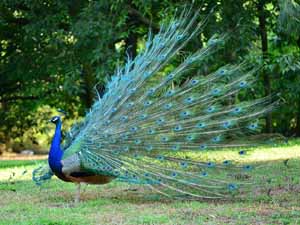
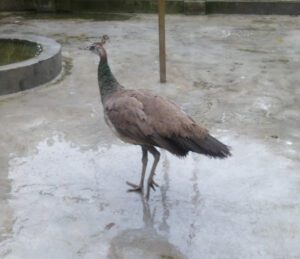

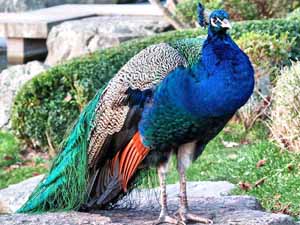
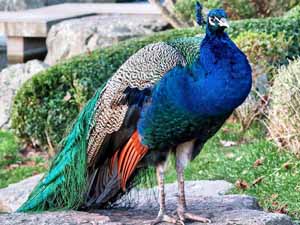
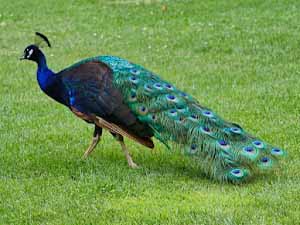
A peacock has appeared in our area. I think it’s a young one as it has no tail or voice yet. With winter approaching I don’t quite know what to do about it. I rang the local animal shelter and they said it will go home when ready is that right?. I live in Jersey, Channel Isles
Yes, most probably it will go home when ready. So, don’t worry.
WE HAVE A PEACKOCK THAT CAME TO OUR PROPERTY ONE DAY I LOVE HIM BUT NOW I AM WORRIED ABOUT THE WINTER COMING HE GOES IN A LARGE TREE AT NIGHT BUT HE STAYS AT THE FRONT WINDOW AND SEEMS OK WITH THAT DO I NEED TO BUILD HIM A SHED OR SOMETHING TO GO INTO PLEASE ADVISE WE LIVE IN DORSET KIND REGARDS PAULINE
Yes, building a shed for him will be a very good decision. After building the shed, spread some food inside the shed and surrounding it so that the bird can get used to it gradually. Thank you!